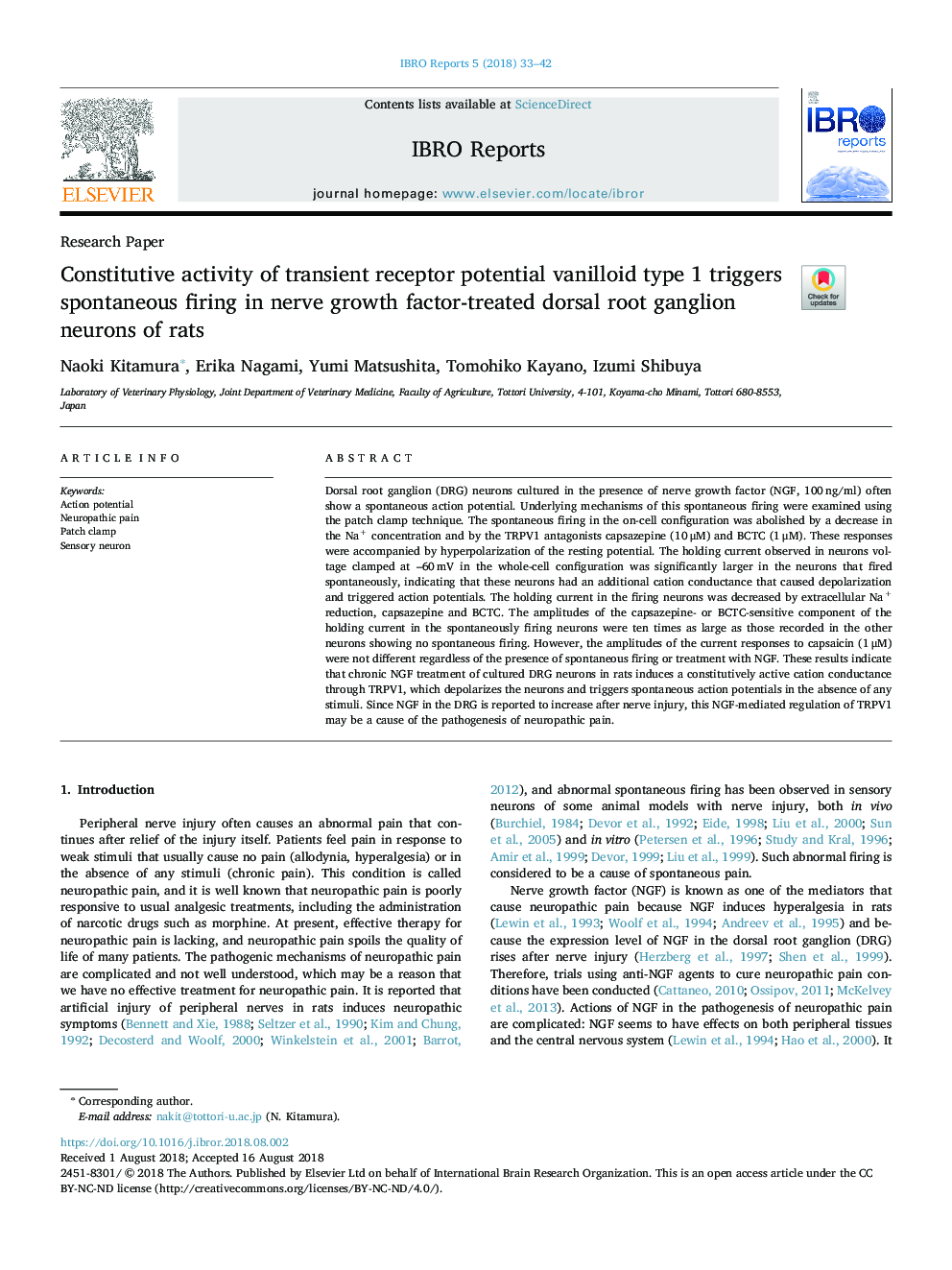| Article ID | Journal | Published Year | Pages | File Type |
|---|---|---|---|---|
| 8839097 | IBRO Reports | 2018 | 10 Pages |
Abstract
Dorsal root ganglion (DRG) neurons cultured in the presence of nerve growth factor (NGF, 100âng/ml) often show a spontaneous action potential. Underlying mechanisms of this spontaneous firing were examined using the patch clamp technique. The spontaneous firing in the on-cell configuration was abolished by a decrease in the Na+ concentration and by the TRPV1 antagonists capsazepine (10âμM) and BCTC (1âμM). These responses were accompanied by hyperpolarization of the resting potential. The holding current observed in neurons voltage clamped at -60âmV in the whole-cell configuration was significantly larger in the neurons that fired spontaneously, indicating that these neurons had an additional cation conductance that caused depolarization and triggered action potentials. The holding current in the firing neurons was decreased by extracellular Na+ reduction, capsazepine and BCTC. The amplitudes of the capsazepine- or BCTC-sensitive component of the holding current in the spontaneously firing neurons were ten times as large as those recorded in the other neurons showing no spontaneous firing. However, the amplitudes of the current responses to capsaicin (1âμM) were not different regardless of the presence of spontaneous firing or treatment with NGF. These results indicate that chronic NGF treatment of cultured DRG neurons in rats induces a constitutively active cation conductance through TRPV1, which depolarizes the neurons and triggers spontaneous action potentials in the absence of any stimuli. Since NGF in the DRG is reported to increase after nerve injury, this NGF-mediated regulation of TRPV1 may be a cause of the pathogenesis of neuropathic pain.
Related Topics
Life Sciences
Neuroscience
Cellular and Molecular Neuroscience
Authors
Naoki Kitamura, Erika Nagami, Yumi Matsushita, Tomohiko Kayano, Izumi Shibuya,
